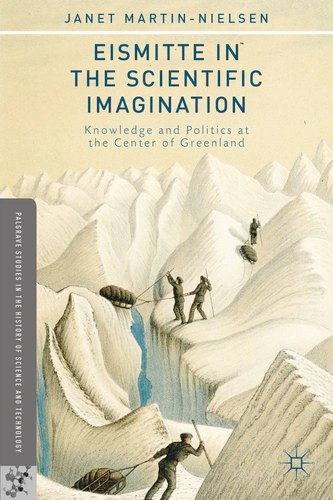Eismitte in the Scientific Imagination
Knowledge and Politics at the Center of Greenland
Summary

Eismitte in the Scientific Imagination, Palgrave Macmillan, 2013
Since the first attempts by Europeans to penetrate into Greenland’s interior in the 18th century, the island’s geometric center, Eismitte, has been one of the most forbidding but scientifically rich locations in the Arctic. Tracing its history from European contact through the Cold War, this study shows how Eismitte was a setting for scientific knowledge production as well as diplomatic maneuvering, providing new insights into the history of polar exploration and the intertwining of scientific and geopolitical considerations. Author Janet Martin-Nielsen draws on new research in private, government, military, and institutional archives in multiple countries and languages to explain how this remote place became a highly charged site of collaboration, contestation and competition.
Praise
“Greenland is all over the news these days. But, until you’ve read this path-breaking book on its under-studied history of science and politics, you cannot understand the world’s largest island or appreciate its central place in climate change research and debates. Drawing on painstaking research in multiple languages on two continents, Martin-Nielsen has produced an innovative, elegantly written, highly accessible book that tells a riveting story not only of science and politics, but also of the real people doing science—as well as heroic exploration, sub-zero camping, dangerous weasel driving, and Cold War politicking—in one of Earth’s most inhospitable places.” Mark Carey, University of Oregon
“This book is a resounding success. Its virtues are many. It provides a broad, thoroughly researched account of science in Greenland, which we have been lacking. It gives this account not through a linear history which would have been tedious, but through a particular theoretical and geographical lens: that of a single place. From that place Janet Martin-Nielsen makes broad outlooks to give interesting and important side stories of the many dimensions, political, military, scientific, technological, and emerging environmental (climate), without which there had been no science and no installations at Eismitte.”Sverker Sörlin, Professor of Environmental History, Royal Institute of Technology, Sweden